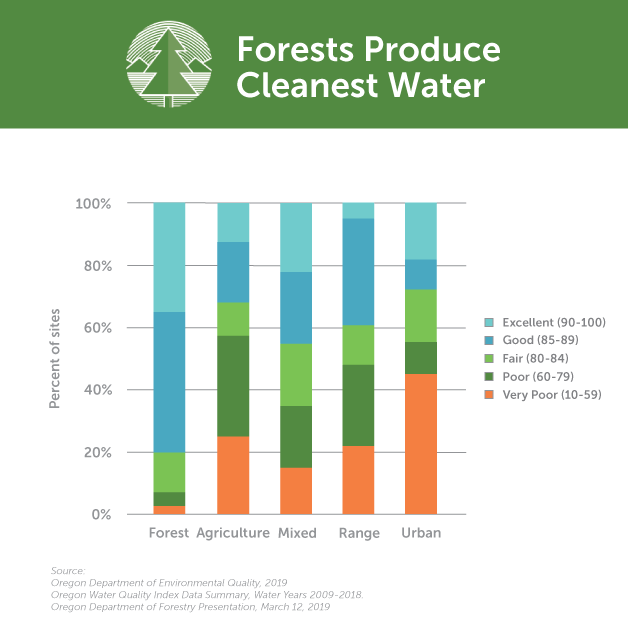Wildfire and smoke can affect all Oregonians. We’re with you.
Stay up to date on all things wildfire by checking out our resources page and signing up for alerts!
Oregon’s Forests Produce Cold, Clean Water
Thanks to advanced sustainable forest practices, Oregon’s forests produce the highest quality water in the state. Professional foresters leave large no-harvest zones next to streams to help provide shade to keep water cool for fish and other aquatic species and to provide water filtration to keep water clean for drinking. The Oregon Department of Environmental Quality’s data confirms that of all land uses, forests produce the highest quality water, including forests with active management.

Recently, the timber industry and environmental groups reached an agreement on the most effective ways to improve protections for forest waters, native fish and amphibians that resulted in the most comprehensive updates to Oregon’s forestry regulations in fifty years. Those updates increase water quality protections and habitat for aquatic species that call Oregon home, including larger no-harvest zones next to streams, upgrades to forest roads to improve fish migration upstream, state-of-the-art computer modeling for landslide-prone hillsides, and millions of dollars of state and private sector investment for creation of wildlife habitat. The agreement also increased protections for drinking water uptakes and made Oregon the first state with a cutting-edge real-time electronic notification system to increase neighbor awareness of forest operations.
We’re focused on actively and sustainably managing our forests in Oregon.